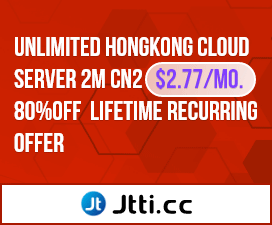- Joined
- Apr 11, 2017
- Messages
- 220
- Points
- 18
Picture this: your website receives 50,000 visitors per second, but none of them are real customers. They're part of a coordinated attack designed to crash your servers and take your business offline. This is the reality of Distributed Denial of Service (DDoS) attacks in 2025, where cybercriminals leverage everything from compromised Internet of Things (IoT) devices to AI-powered botnets.
Key Attack Types You'll Face:
Building Your First Line of Defense: Firewall Fundamentals
Think of a firewall as your website's bouncer—it decides who gets in and who gets turned away. But unlike a simple door guard, modern firewalls are intelligent systems that analyze patterns, learn from threats, and adapt their responses.
Types of Firewalls for Web Hosting
Network Firewalls (Hardware/Software)
1. Geographic Filtering
# Block traffic from high-risk countries (adjust based on your audience)
iptables -A INPUT -m geoip --src-cc CN,RU,KP -j DROP
2. Rate Limiting
# Limit connections per IP to prevent abuse
iptables -A INPUT -p tcp --dport 80 -m limit --limit 25/minute --limit-burst 100 -j ACCEPT
3. Common Port Protection
# Block unnecessary services
iptables -A INPUT -p tcp --dport 23 -j DROP # Telnet
iptables -A INPUT -p tcp --dport 135 -j DROP # RPC
iptables -A INPUT -p udp --dport 161 -j DROP # SNMP
4. Whitelist Essential Services
# Allow HTTP, HTTPS, and SSH
iptables -A INPUT -p tcp --dport 80 -j ACCEPT
iptables -A INPUT -p tcp --dport 443 -j ACCEPT
iptables -A INPUT -p tcp --dport 22 -s YOUR_ADMIN_IP -j ACCEPT
Advanced Firewall Configuration
Once you've mastered the basics, it's time to implement sophisticated protection that can handle modern attack vectors.
Stateful Packet Inspection
Modern firewalls track connection states, remembering legitimate sessions and blocking suspicious patterns. Configure your firewall to maintain connection tables that track TCP session states and automatically drop packets that don't belong to established connections.
Deep Packet Inspection (DPI)
DPI analyzes the actual content of data packets, not just headers. This allows detection of application-layer attacks that traditional firewalls miss. Implement DPI rules that:
Set dynamic thresholds that adjust based on traffic patterns. During normal business hours, allow higher connection rates from legitimate geographic regions while maintaining strict limits during off-peak hours when attacks are more common.
Example Configuration:
# Dynamic rate limiting based on time
# Business hours (9 AM - 6 PM): 100 connections/minute
# Off hours: 20 connections/minute
iptables -A INPUT -p tcp --dport 80 -m time --timestart 09:00 --timestop 18:00 -m limit --limit 100/minute -j ACCEPT
iptables -A INPUT -p tcp --dport 80 -m limit --limit 20/minute -j ACCEPT
DDoS Protection Strategies
DDoS protection requires a multi-layered approach that can absorb, filter, and redirect malicious traffic before it reaches your servers.
Layer 3/4 Protection (Network Layer)
Behavioral Analysis Modern DDoS protection analyzes user behavior patterns to distinguish between human visitors and automated attacks. Legitimate users follow predictable patterns—they browse multiple pages, spend time reading content, and interact with forms naturally.
Challenge-Response Mechanisms: Implement progressive challenges that become more complex as threat levels increase:
Absorption: Build infrastructure capable of handling attack traffic
Implementing Cloud-Based Protection
Cloud-based DDoS protection offers the most scalable and cost-effective solution for most websites in 2025.
Choosing the Right Cloud Protection Service
Cloudflare
Monitoring and Response Systems
Effective protection requires continuous monitoring and rapid response capabilities. The best defenses adapt automatically to new threats while providing detailed intelligence about attack patterns.
Real-Time Monitoring Dashboards
Set up comprehensive dashboards that track:
Threshold-Based Actions: Configure automatic responses triggered by specific conditions:
Alert and Escalation Procedures
Tiered Alert System
Testing Your Defenses
Regular testing ensures your protection systems work when you need them most. However, never test production systems with actual attack tools—use controlled testing environments and professional services.
Penetration Testing
Professional Testing Services Engage certified ethical hackers to test your defenses quarterly. Penetration testers can simulate real attack scenarios without causing actual damage.
Automated Vulnerability Scanning: Implement regular scans that check for:
The cybersecurity landscape continues evolving rapidly. Stay ahead of emerging threats by understanding new attack vectors and implementing cutting-edge countermeasures.
AI-Powered Attacks
Adaptive Botnets Modern botnets use machine learning to adapt their attack patterns in real-time, making traditional signature-based detection less effective. Counter these threats with AI-powered defense systems that can match the sophistication of AI-driven attacks.
Deepfake Social Engineering Attackers now use AI-generated content to bypass human verification systems and create convincing social engineering campaigns. Implement multi-factor authentication and behavioral analysis to verify user identity beyond simple visual confirmation.
Quantum Computing Considerations
While practical quantum computers remain years away, begin preparing your encryption and security protocols for the quantum era. Implement post-quantum cryptography algorithms in new systems and develop migration plans for existing infrastructure.
IoT and Edge Computing Vulnerabilities
The explosion of IoT devices and edge computing creates new attack surfaces. Protect against IoT-based DDoS attacks by implementing device authentication protocols and network segmentation that isolates IoT traffic from critical systems.
Conclusion: Building Resilient Digital Infrastructure
Effective DDoS protection and firewall configuration require ongoing attention, regular updates, and continuous learning. The strategies outlined in this guide provide a solid foundation, but remember that cybersecurity is a journey, not a destination.
Quick Action Checklist:
Key Attack Types You'll Face:
- Volumetric Attacks: UDP floods, ICMP floods, and amplification attacks
- Protocol Attacks: SYN floods, fragmented packet attacks, and Ping of Death
- Application Layer Attacks: HTTP floods, Slowloris, and targeted API abuse
- AI-Enhanced Attacks: Machine learning-driven traffic patterns that adapt to defenses
Building Your First Line of Defense: Firewall Fundamentals
Think of a firewall as your website's bouncer—it decides who gets in and who gets turned away. But unlike a simple door guard, modern firewalls are intelligent systems that analyze patterns, learn from threats, and adapt their responses.
Types of Firewalls for Web Hosting
Network Firewalls (Hardware/Software)
- Control traffic at the network perimeter
- Excellent for blocking known malicious IP ranges
- Best for: Basic protection and traffic filtering
- Analyze HTTP/HTTPS traffic specifically
- Understand application logic and common attack patterns
- Best for: Protecting web applications and APIs
- Distributed protection across multiple data centers
- Automatically updated threat intelligence
- Best for: Scalable protection without hardware investment
1. Geographic Filtering
# Block traffic from high-risk countries (adjust based on your audience)
iptables -A INPUT -m geoip --src-cc CN,RU,KP -j DROP
2. Rate Limiting
# Limit connections per IP to prevent abuse
iptables -A INPUT -p tcp --dport 80 -m limit --limit 25/minute --limit-burst 100 -j ACCEPT
3. Common Port Protection
# Block unnecessary services
iptables -A INPUT -p tcp --dport 23 -j DROP # Telnet
iptables -A INPUT -p tcp --dport 135 -j DROP # RPC
iptables -A INPUT -p udp --dport 161 -j DROP # SNMP
4. Whitelist Essential Services
# Allow HTTP, HTTPS, and SSH
iptables -A INPUT -p tcp --dport 80 -j ACCEPT
iptables -A INPUT -p tcp --dport 443 -j ACCEPT
iptables -A INPUT -p tcp --dport 22 -s YOUR_ADMIN_IP -j ACCEPT
Advanced Firewall Configuration
Once you've mastered the basics, it's time to implement sophisticated protection that can handle modern attack vectors.
Stateful Packet Inspection
Modern firewalls track connection states, remembering legitimate sessions and blocking suspicious patterns. Configure your firewall to maintain connection tables that track TCP session states and automatically drop packets that don't belong to established connections.
Deep Packet Inspection (DPI)
DPI analyzes the actual content of data packets, not just headers. This allows detection of application-layer attacks that traditional firewalls miss. Implement DPI rules that:
- Scan for SQL injection attempts in HTTP POST data
- Detect cross-site scripting (XSS) patterns
- Identify malformed requests that could crash applications
Set dynamic thresholds that adjust based on traffic patterns. During normal business hours, allow higher connection rates from legitimate geographic regions while maintaining strict limits during off-peak hours when attacks are more common.
Example Configuration:
# Dynamic rate limiting based on time
# Business hours (9 AM - 6 PM): 100 connections/minute
# Off hours: 20 connections/minute
iptables -A INPUT -p tcp --dport 80 -m time --timestart 09:00 --timestop 18:00 -m limit --limit 100/minute -j ACCEPT
iptables -A INPUT -p tcp --dport 80 -m limit --limit 20/minute -j ACCEPT
DDoS Protection Strategies
DDoS protection requires a multi-layered approach that can absorb, filter, and redirect malicious traffic before it reaches your servers.
Layer 3/4 Protection (Network Layer)
- Traffic Shaping and Bandwidth Management: Implement Quality of Service (QoS) rules that prioritize legitimate traffic over suspicious patterns. Configure your network equipment to automatically throttle traffic that exceeds normal parameters while maintaining service for real users.
- Anycast Network Distribution: Deploy your services across multiple geographic locations using Anycast routing. When an attack targets one location, traffic automatically routes to the nearest available server, distributing the load and maintaining availability.
Behavioral Analysis Modern DDoS protection analyzes user behavior patterns to distinguish between human visitors and automated attacks. Legitimate users follow predictable patterns—they browse multiple pages, spend time reading content, and interact with forms naturally.
Challenge-Response Mechanisms: Implement progressive challenges that become more complex as threat levels increase:
- JavaScript Challenge: Requires browsers to execute simple JavaScript
- Captcha Challenge: Human verification for suspicious traffic
- Device Fingerprinting: Analysis of browser and device characteristics
Absorption: Build infrastructure capable of handling attack traffic
- Pros: Maintains user experience during attacks
- Cons: Expensive, requires massive bandwidth reserves
- Pros: Cost-effective, scales automatically
- Cons: May briefly impact legitimate users during redirection
Implementing Cloud-Based Protection
Cloud-based DDoS protection offers the most scalable and cost-effective solution for most websites in 2025.
Choosing the Right Cloud Protection Service
Cloudflare
- Strengths: Global network, excellent free tier, easy setup
- Best for: Small to medium websites, beginners
- Considerations: Less customization in lower tiers
- Strengths: Deep integration with AWS services, 24/7 response team
- Best for: AWS-hosted applications, enterprise users
- Considerations: Higher cost, requires AWS ecosystem
- Strengths: Enterprise-grade protection, extensive customization
- Best for: Large enterprises, high-traffic sites
- Considerations: Complex setup, higher cost
- DNS Protection Setup: Configure your DNS to route through protection services before reaching your origin servers. This creates an invisible shield that filters traffic without revealing your actual server IP addresses.
- Origin Server Cloaking: Never expose your origin server IP addresses publicly. Use protection services as reverse proxies and configure your firewall to only accept traffic from verified protection service IP ranges.
- SSL/TLS Configuration: Ensure end-to-end encryption between users, protection services, and your origin servers. Configure flexible SSL modes that accommodate various client capabilities while maintaining security.
Monitoring and Response Systems
Effective protection requires continuous monitoring and rapid response capabilities. The best defenses adapt automatically to new threats while providing detailed intelligence about attack patterns.
Real-Time Monitoring Dashboards
Set up comprehensive dashboards that track:
- Traffic Patterns: Normal vs. anomalous traffic volumes
- Geographic Distribution: Unusual traffic origins
- Request Types: HTTP methods, user agents, referrers
- Response Codes: Error rates that might indicate attacks
Threshold-Based Actions: Configure automatic responses triggered by specific conditions:
- Traffic volume exceeding 200% of normal levels
- More than 50% of requests return 4xx/5xx errors
- Unusual geographic traffic patterns
Alert and Escalation Procedures
Tiered Alert System
- Level 1: Automated mitigation, log for review
- Level 2: Email alerts to the technical team
- Level 3: SMS/phone alerts, escalate to management
- Level 4: Emergency response, all hands on deck
Testing Your Defenses
Regular testing ensures your protection systems work when you need them most. However, never test production systems with actual attack tools—use controlled testing environments and professional services.
Penetration Testing
Professional Testing Services Engage certified ethical hackers to test your defenses quarterly. Penetration testers can simulate real attack scenarios without causing actual damage.
Automated Vulnerability Scanning: Implement regular scans that check for:
- Open ports and services
- Outdated software versions
- Configuration weaknesses
- SSL/TLS certificate issues
- Gradual Load Increases: Test your system's ability to handle traffic spikes by gradually increasing load until you identify breaking points. This helps you understand capacity limits and optimization opportunities.
- Failure Scenario Testing: Simulate various failure modes to ensure your protection systems maintain effectiveness when components fail. Test scenarios like database overload, memory exhaustion, and network congestion.
The cybersecurity landscape continues evolving rapidly. Stay ahead of emerging threats by understanding new attack vectors and implementing cutting-edge countermeasures.
AI-Powered Attacks
Adaptive Botnets Modern botnets use machine learning to adapt their attack patterns in real-time, making traditional signature-based detection less effective. Counter these threats with AI-powered defense systems that can match the sophistication of AI-driven attacks.
Deepfake Social Engineering Attackers now use AI-generated content to bypass human verification systems and create convincing social engineering campaigns. Implement multi-factor authentication and behavioral analysis to verify user identity beyond simple visual confirmation.
Quantum Computing Considerations
While practical quantum computers remain years away, begin preparing your encryption and security protocols for the quantum era. Implement post-quantum cryptography algorithms in new systems and develop migration plans for existing infrastructure.
IoT and Edge Computing Vulnerabilities
The explosion of IoT devices and edge computing creates new attack surfaces. Protect against IoT-based DDoS attacks by implementing device authentication protocols and network segmentation that isolates IoT traffic from critical systems.
Conclusion: Building Resilient Digital Infrastructure
Effective DDoS protection and firewall configuration require ongoing attention, regular updates, and continuous learning. The strategies outlined in this guide provide a solid foundation, but remember that cybersecurity is a journey, not a destination.
Quick Action Checklist:
- Implement basic firewall rules
- Configure rate limiting
- Set up cloud-based DDoS protection
- Create monitoring dashboards
- Establish alert procedures
- Schedule regular security testing
- Prepare incident response plans
- Stay informed about emerging threats








